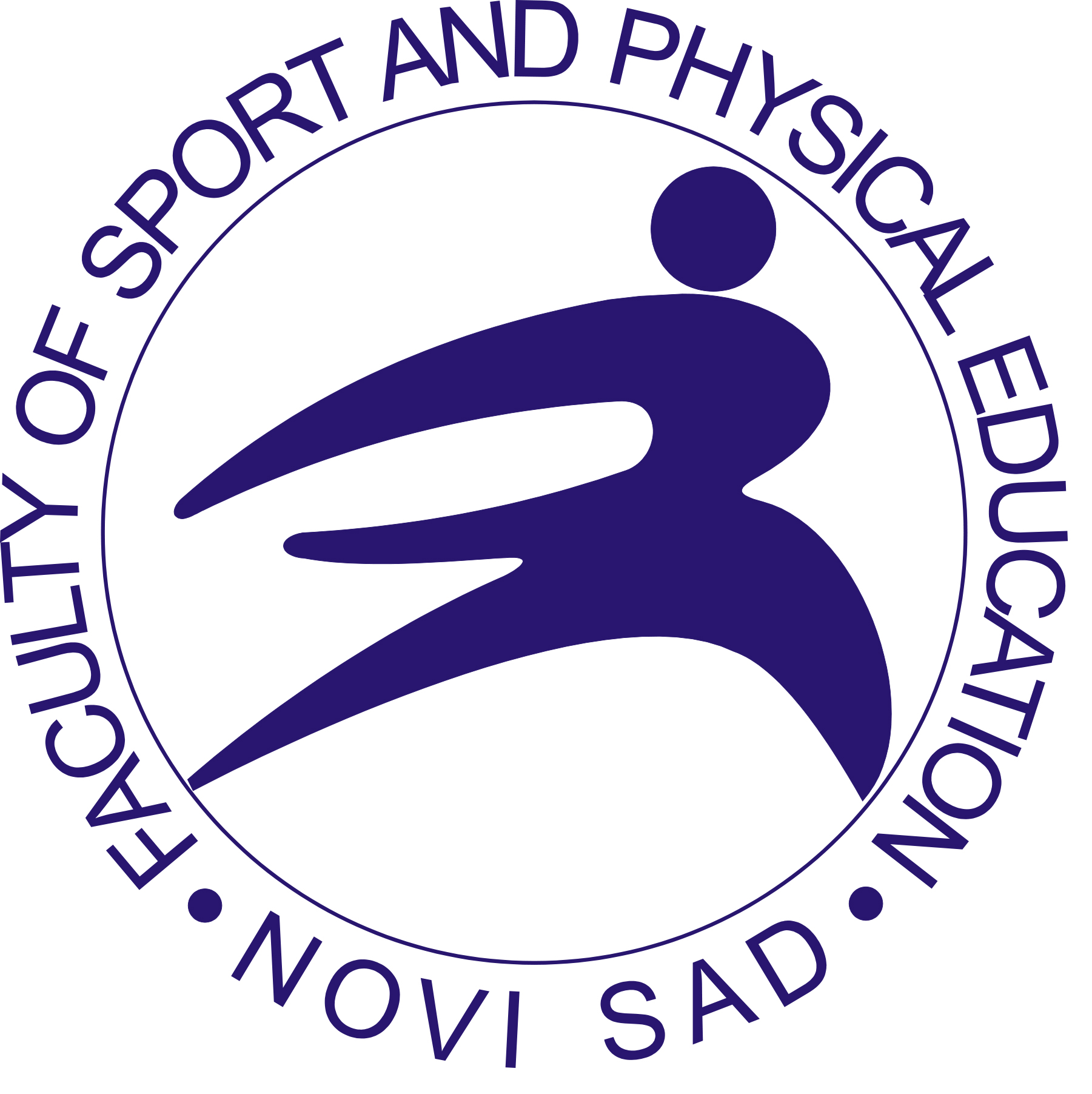Vol 12, No 2 (2020)
Published: 16.12.2020.
Authors in this issue:
Adebisi I. Hammed, Brigita Banjac, Cécil J.W. Meulenberg, Chigozie O. Obaseki, Damjan Jakšić, Ezekiel Onyemechi, Jelena Lukić, Jovana Trbojević Jocić, Leo Pavičić, Pascal Chidera Uzoh, Razie Garooei, Stefan Maričić, Susan O. Kubeyinje, Vedran Džakula, Yaser Khanjari, Zvonko Miljković, • Bülent Okan Miçooğulları,
Edited by:
Danilo Radanović
Author guidelines
Editorial Policy
33
Issues201
ArticlesBECOME A REVIEWER
We invite you to become an Exercise and Quality of Life reviewer.
BECOME GUEST EDITOR
Exercise and Quality of Life runs special issues to create collections of papers on specific topics.
Archive
See all
Volume 17, Issue 1, 2025
Volume 16, Issue 3, 2024
Volume 16, Issue 2, 2024
Volume 16, Issue 1, 2024
16.12.2020.
Original scientific paper
Comparison of adolescents with different annual quota of Physical Education classes in anthropometric parameters, physical fitness tests, and grades achievements
This study compared different groups yearly based on the different annual quota of Physical Education (PE) classes in anthropometric parameters, physical fitness tests, and grades achievements. The study included adolescents from 14 to 18 years of age, at the Croatian Industrial School in Slavonski Brod. They were 225 participants in the 2015-2016 academic year, 213 in 2016-2017, 200 in 2017-2018, and 318 in 2017-2018. Groups were determined yearly by the different annual quota of PE classes (1 or 2 per week) in the teaching program. Anthropometric measures (body height, body weight, BMI), physical fitness tests (standing long jump, sit-ups, run for 1000 m), grade in the PE class, and the general achievement grade at the end of the school year were conducted. Data collected from the 2015-2016 until the 2018-2019 academic year. Analysis of variance (ANOVA) was used to assess the differences between groups for each school year separately. Results for sit-ups and run for 1000 m test in 2015-2016, BMI in 2018-2019, and the grade of PE class in 2017-2018 and 2018-2019 academic year indicated significant differences between groups (p<0.05). The groups with 2 PE classes per week were made better results compared to the groups with 1 PE class. Therefore, increasing the number of PE classes per week should be necessary for achieving the positive, beneficial, physical, and mental outcomes of Physical Education.
Vedran Džakula, Zvonko Miljković, Leo Pavičić, Brigita Banjac
16.12.2020.
Original scientific paper
Psychometric properties of a Serbian version of the State-Trait Anxiety Inventory X-2
Given that anxiety is a significant individual disposition that affects sports performance, this study aimed to verify the latent variables obtained by the State – Trait Anxiety Inventory X-2, and to compare the obtained factor solutions with the proposed model of latent variables. The second aim refers to the presentation of the results of the questionnaire State – Trait Anxiety Inventory X-2 answered by Serbian male and female handball players. The research was conducted on a sample of 170 respondents, 99 male and 71 female handball players, aged 14 to 39 years (average age = 21.9) with an average handball playing career of 9.39 years. Towards the end of 2019, the respondents filled in the above-mentioned questionnaire used to assess anxiety as a personality trait. Exploratory factor analysis with certain modifications of the algorithm was applied to determine accurately latent space. The overall analysis was performed using the R statistical package. Four factors were selected based on the conducted factor analysis of the latent space of the questionnaire. Ten, five, three and two items are projected on the first, second, third and fourth factor respectively. Since internal reliability of the fourth factor was 0.394 it was excluded from further consideration and interpretation. The achieved scores on four separate factors show that Serbian male and female handball players achieve average results on the first (Presence of Trait anxiety) and the third factor (Absence of proactivity), while they achieve scores above the average on the second factor (Positive affect). In order to examine the sex differences between the examined variables, a one-way analysis of variance was performed. The findings show that there is no statistically significant difference on all three factors between the scores achieved by male and female handball players. A statistically significant difference between handball players of different competitive ranks appeared only on the Positive affect factor between the top athletes and the athletes in the second league (p = .04).
Damjan Jakšić, Jovana Trbojević Jocić, Stefan Maričić, • Bülent Okan Miçooğulları
16.12.2020.
Original scientific paper
Psychosocial parameters as determinants of return to work among stroke survivors
This study investigated the psychosocial parameters as determinants of return to work among stroke survivors. This study involved 49 stroke survivors. Hospital Anxiety and Depression Scale (HADS) was used to determine the levels of anxiety and depression of the subjects. Equally, Health-Related Quality of Life (HRQOL) of the subjects was measured with the Stroke Specific Quality of Life (SS-QOL) scale. Also, a self-structured questionnaire was used to determine return to work of the subjects. The difference between stroke survivors that returned to work and those that did not return to work was established using Pearson’s chi-squared test. Also, Independent sample t-test was used to test for significance. Statistical significance was accepted for a p-value of <0.05. The outcome of this study showed a significant (p<0.05) difference in the depression of stroke survivors that returned to work and those that did not return to work. Also, significant (p<0.05) differences exist in the anxiety and quality of life of stroke survivors that returned to work and those that did not return to work. Likewise, age was found to have a significant influence on return-to-work status (p<0.05). Besides, gender, occupation and duration of physiotherapy had no significant (p > 0.05) influence on return-to-work status of stroke survivors. This study, therefore concluded that the level of depression, anxiety, and quality of life can substantially have an influence on return to work or otherwise among stroke survivors. Therefore, health professionals should develop and incorporate strategies to enhance the quality of life, prevent depression and anxiety in the management of stroke survivors.
Pascal Chidera Uzoh, Adebisi I. Hammed, Ezekiel Onyemechi, Chigozie O. Obaseki, Susan O. Kubeyinje
16.12.2020.
Original scientific paper
The effect of a water jogging exercise course on older men with knee osteoarthritis
Knee osteoarthritis is one of the most common joint disorders and a major cause of disability and disability in old age. Although previous research has shown the positive effects of exercise on land to some extent, but due to high pressure on land, the elderly does not want to participate in these exercises. Water exercise has recently been considered to reduce pain in patients with osteoarthritis of the knee, although its effects have not yet been fully elucidated. So, the objective of this study was to investigate the effect of a water jogging training program on the symptoms of knee osteoarthritis in elderly men. 15 elderly men with knee osteoarthritis were purposefully selected as subjects. We used global questionnaire of the consequences of knee injuries and osteoarthritis (KOOS) to collect data. The subjects performed a jogging in water program for 10 weeks under the supervision of a hydrotherapy instructor level. Correlated t-test was used to analyze the data at the significance level (P<0.05). Between pre-test and post-test, the mean symptoms (P=0.033), knee pain (P=0.024), motor function in daily activities (P=0.014), motor function in recreational sports activities (P=0.006) and Quality of life (P=0.005) was significantly different after the program. The results of this study show that regular practice of jogging in water can be a new, safe, effective and low-cost way to improve pain and quality of life in people with knee osteoarthritis. These exercises may reduce the need for surgery and knee replacement in patients with knee arthritis.
Yaser Khanjari, Razie Garooei
16.12.2020.
Review scientific paper
Anthropometric characteristics of rhythmic gymnasts
In esthetic sports, such as rhythmic gymnastics, body size and body composition can directly affect performance and outcome. The aim of this study was to identify anthropometric characteristics and to notice their impact on the prediction of higher performance in rhythmic gymnastics. For the needs of this review, scientific literature was analyzed from prestigious scientific journals. This systematic review included available data from the following databases: Google Scholar, Springer, PubMed, Europe PMC and research databases. Studies with the following criteria were included: anthropometric characteristics, profile or status and somatic constitution, body composition, somatotypes and morphological models, factors influencing performance and the level of the performance (reliability), and being published in English and Serbian language. Out of total 52 studies, reviewed 9 studies met the inclusion criteria. Based on the findings of the present study it could be concluded that anthropometric characteristics are an important item on the basis of which talent identification, sports selection and programming of training and nutrition plan is performed.
Jelena Lukić
16.12.2020.
Professional paper
BRAIN CHANGER. Felice Jacka, 321 pages, Macmillan, 2019 (ISBN: 978-1-76055-651-8)
This easy readible and thoroughly scientifically-backed book by australian professor Felica Jacka, explains the recent science on how diet can affect the brain and mental health, with a specific focus on the risk to anxiety and depression. The scientific evidence is drawn from the results with larger cohorts and randomized controlled trials including amongst others: ALSPAC (Avon Longitudinal Study of Parents and Children, United Kingdom); HELFIMED (Healthy Eating for Life with a Mediterranean Diet, Australia); HUSK (Hordaland Health Study, Norway); PREDIMED (Prevencíon con Dieta Mediterránea, Spain); SMILES (Supporting the Modification of Lifestyles in Lowered Emotional States, Australia). These and other studies show that wherever the geographical area, plant-based Mediterranean-like diets improve the health outcomes of children, adolescents, adults and ageing individuals affected by mental health illnesses, in cost-effective ways. Consecutive chapters illustrate recent understandings of the effects of diets on the immune system, their influence on brain plasticity (which also occurs in older humans), epigenetics, food sensitivities, inflammation, and centrally, the importance of food to the gut microbiota (including the consumption of fermented foods). These effects are explained simply and efficiently in relation to mental health, as well as briefly to psychotic illnesses, autism and ADHD. By doing so, it is possible for every physical-activity researcher or athlete interested in the combination of nutrition, lifestyles and good habits, to get up to date easily, or to make a first aquaintance with the fields of nutrition and brain health. The appendix contains a reference list that restricts itself to the most influential studies like systematic reviews and meta-analysis. Also included is the Modified Mediterranean Diet (ModiMED) food pyramid, and several ModiMEd recipies (used in the SMILES study), as well a weekly meal planner, that all could be of use to get started with an easy intervention study. Although it is intended for the general public, the book is recommended for scholars of any life sciences. With her to-the-point and easy language writing gift, professor Jacka manages to explain the complicated matters of brain health effortlessly. She does this convincingly, but not superficially, relevant and correct, without any simplification. To influence mental health through nutritious, whole foods will be an essential topic to come, also in the fields of sports. In that sense Brain Changer, can be exactly that.
Cécil J.W. Meulenberg

























